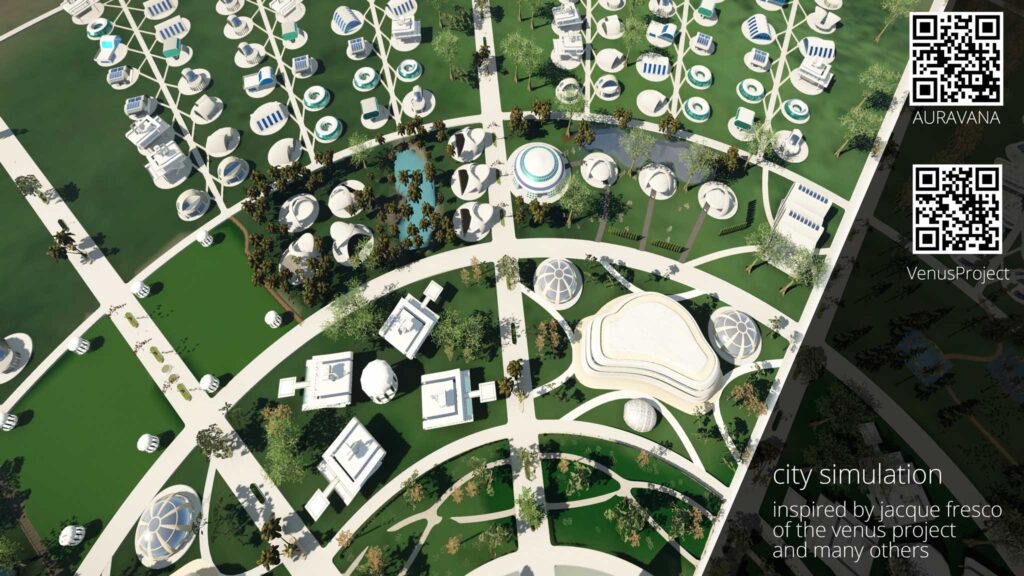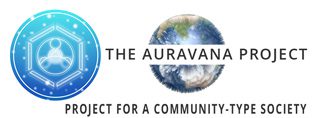How did we create the VR city, and what are our plans for its use?
Many of the images you see of the city were captured from within what is commonly known as a “game engine”. Game engines are actually reality simulators, and it is interesting that they are still called game engines. A “game engine” is another term for a simulation engine also known as a reality simulator. Reality simulation technology is, however, more commonly referred to as a “game engine” (rather than a “simulation engine”) because its primary application in the market, historically, has been the development of computer-video games. A simulation/game engine in combination with several other pieces of software, including 3D modeling software, allows us to construct an interactive and highly immersive virtual reality representation of the community’s integrated city system, wherein we can simulate (to a large degree) its designed operation. Within a simulation engine, a physics engine emulates interaction with the real world. Essentially, a game engine is a software application used to develop real-time, interactive, 2D/3D simulated [virtual] environments. This means, that on our computing systems we can actually walk around the city (with an avatar) and program realistic [virtual] interaction into the city. Essentially, the game engine allows us to produce a virtual reality simulation of the technical and socio-economic operation of different versions and configurations of the community and its integrated city systems.
Once the stuff of science fiction, virtual reality (VR) has arrived as a relatively affordable and mainstream consumer technology. VR is a new, complex form of communication, and as with any other medium of communication, we can use it to convey arguments and facilitate change in how individuals view the real world. It is a technology that we can use to demonstrate the feasibility of our designs, and it will revolutionize how we share our proposal for community. The vividness of virtual reality can give an audience a sense of immersion, enhance the emotional impact of a message, and bypass poorly constructed analytical arguments. We no longer need to “tell” or “sell” people what we are proposing; we can show them and allow them to freely experience it (in a virtual environment) for themselves. Experiences within immersive virtual environments are more powerful than mere imagination (e.g., reading) in terms of information transfer and influence on actual thinking and behavior.

Through the use of VR we can walk around the community and immerse ourselves in the experience of its complex operation. Not only will this be helpful to us in simulating, testing and improving its design, but it will become an excellent and highly persuasive marketing tool. Imagine if we could freely share a virtual reality experience of what it would be like to tangibly live and participate in community, to experience as best can be experienced virtually that which is described by our design specifications. It will reveal that what we are proposing is actually possible now. Though, in fact, what we propose has been possible for a number of decades.
This VR experience may help individuals come to a greater understanding of what the current modern socio-economic system actually removes from them by its ongoing existence. It may reveal how the current system limits their potential. Through a well-structured simulated orientation, we can help individuals reconsider maximizing their current situation in modern society, and instead, facilitate a shift toward a greater understanding to what is truly important to them in life, which they may not even be able to well articulate. When people encounter our direction for the first time, they often think about what we propose in terms of what they will lose, rather than what they will gain. Although community is significantly more pleasant, fulfilling and generous than modern society, it is so different that people have a difficult time conceptualizing it, and immediately think about what will be absent.
If you want to change people’s minds, and if they are on a different paradigm than you, if they identify themselves with a whole different set of presuppositions at a subconscious level, you will frequently not be able to change their mind by being rational. And, the more evidence you show them that is at variance with their fundamental paradigm, often, makes them angrier and more rigid, and so, we need a more eloquent and intelligently persuasive way of helping people re-visualize what is possible (and, what they may be missing out on). Our senses provide access to the brain and by simulating the sensory environment of community through immersive virtual reality people will much more quickly get the perspective we are trying to convey. A virtual reality experience will facilitate rewiring of the brain toward what is possible in the present, and toward our broader, and more integrated worldview. Change on the scale that is required can only be realized when people see and experience a better way.
The experience of a different reality can physiologically change a person’s mind. In other words, virtual reality can literally change our minds. Think about the way current media does that (possibly, in the Orwellian sense). It is important to take virtual reality seriously and to create a simulation of a socio-economic system that is inherently positive for all human and ecological life in its focus.

Wouldn’t it be great to have a free, open and shared simulator of the community? Through such a simulator we could test out different operational designs, technologies and city configurations, and we could facilitate a personal exploration of the environment for others. A virtual simulation of community would give people a taste of the experience of a life of greater fulfillment. And then, after it is experienced virtually, one could go to our website and find the exact reasoning, designs, tools, and resources for the creation and duplication of the most up-to-date version of the community. When experienced, even virtually, I think most people in modern society will consider community a better way of living than the way they live now.
I would like to make one final, but very important point here: this virtual reality simulation, and the content behind it, must be open source and free shared so that we can all collaborate upon and evolve its design. Any organization that creates such an experience and doesn’t release it in an open source and free shared manner is doing a significant disservice to our direction.
